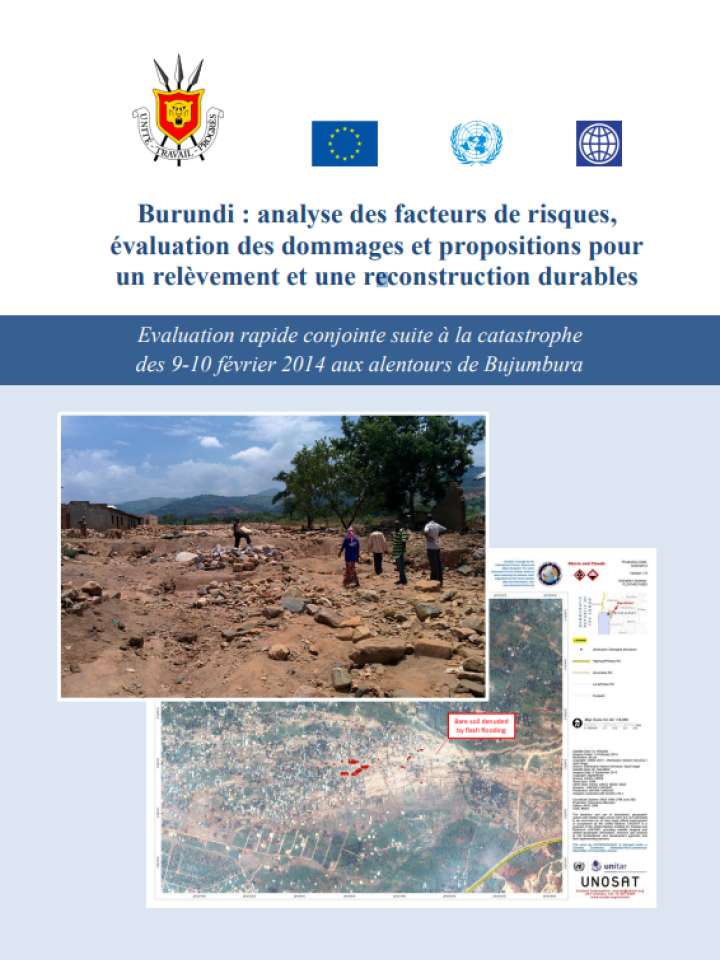Post-Disaster Needs Assessment of the 2014 Floods in Burundi (PDNA)
Heavy rain fell on Bujumbura and its surroundings on the night of February 9 to 10, 2014 (up to 80 mm of precipitation recorded between 8 p.m. and 11:30 p.m. on February 9). These precipitations generated significant runoff on the neighboring slopes, landslides and the rupture of a spontaneous reservoir on the Gasenyi River, upstream from an unserviced working-class district (Gatunguru), in which most of the victims resided. The rains also caused the Gikoma and Nyabagere rivers to overflow and flooded the plain bordering Lake Tanganyika. The communes of Buterere, Isale, Kamenge, Kinama and Mutimbuzi suffered more than 80% of the damage. Nearly 1,000 homes collapsed, a large market was swept away, 20,000 people were left homeless, and 77 people were reported dead. In terms of infrastructure, the event damaged roads, bridges, drinking water supply and electricity networks as well as two markets.
The objective of this assessment is to determine the risk factors, damage and activities to contribute to the rehabilitation, reconstruction and safeguarding of infrastructure. This report gives particular importance to the sectors of urban planning, water and sanitation and road transport; the United Nations system has focused on the sectors of education, health and agriculture; the European Union has made contributions in the areas of road transport and rural development.
